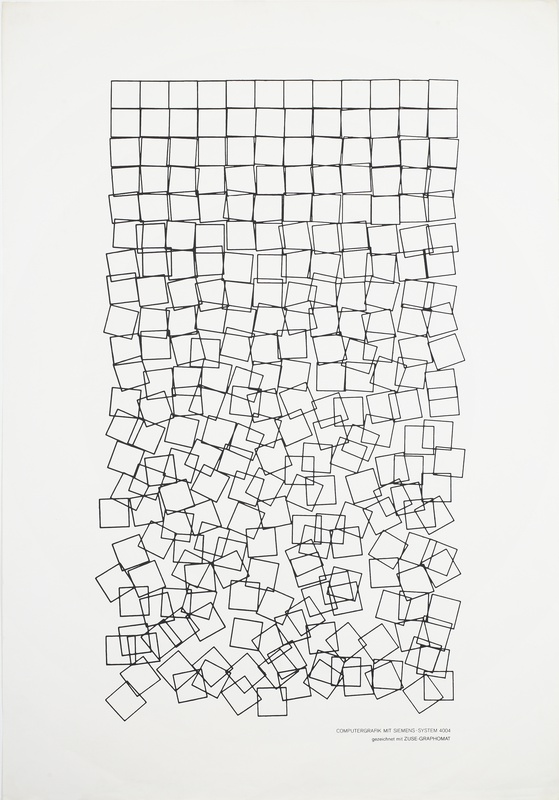Pebbels
Georg Nees
(1966)
Georg Nees (Germany) is one of the pioneers of computer art. He made his first computer graphics in 1964. His solo exhibition in the year after that is the first-known exhibition of its kind. However, Nees was not primarily interested in art. He studied mathematics and physics at the University of Erlangen-Nuremberg and worked as an industry mathematician for Siemens after he graduated. He began to experiment with the equipment he used at work, producing the works of art that are on display in Blossom.
To create Pebbels (1966) Nees programmed a computer that was connected to a drawing board. It produced drawings consisting of small, equally-sized squares on a surface. It is only the precise location of the square on the surface and the corner in which it is drawn that changes. The variety increases, the further we let our eyes glance over the image. In order to let this variety increase in an ascending and random way, the right formulas were needed to instruct the computer what to do. This is how Nees created artistic images with the help of mathematical models and an electronic machine.
In these early years of computer art, the makers often did not have a background in art but in science. This is because the technology was not easy to gain access to, and because it took a long time to learn how to programme. So the scientists were the first to experiment with this new medium.

